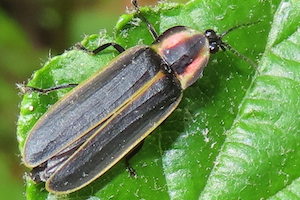Photo Credit: © lkeifer via iNaturalist.org. Creative Commons Attribution-NonCommercial 4.0 International (CC BY-NC 4.0) License; https://creativecommons.org/licenses/by-nc/4.0/.
Pyractomena borealis
Common Name: spring treetop flasher
Other Common Names: spring firefly, spring tree-top flasher
Animal Guild: Insect
Class > Order > Family: Insecta > Coleoptera > Lampyridae
